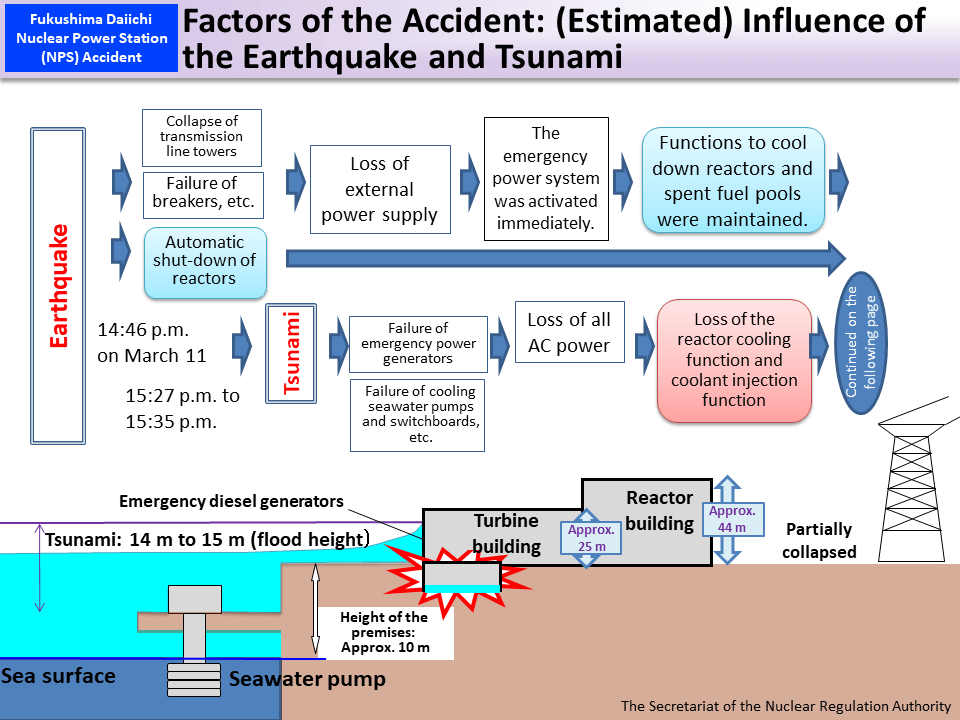Factors of the Accident: (Estimated) Influence of the Earthquake and Tsunami
Immediately after the earthquake, at Unit 1, Unit 2 and Unit 3 at Tokyo Electric Power Company (TEPCO)'s Fukushima Daiichi NPS, which were in operation, all reactors were shut down automatically. As external electrical power supply was lost due to the collapse of transmission line towers, etc., emergency diesel generators were automatically activated. However, the tsunami hit the NPS and flooded those emergency diesel generators, switchboards and other equipment. All Units except for Unit 6 lost all AC power and cooling seawater pumps stopped functioning. As a result, Unit 1 lost all functions to cool down the reactor. Unit 2 and Unit 3 continued cooling reactors for some time using the Reactor Core Isolation Cooling System (RCIC) and the High Pressure Coolant Injection System (HPCI), respectively, which can work without AC power. However, these systems also stopped soon.
Under such circumstances, NPS staff worked to shift to alternative coolant injection using fire pumps or other equipment at Unit 1, Unit 2 and Unit 3, but until those alternative measures were commenced, reactor cores were left uncooled. Coolant injection is considered to have been suspended for around 14 hours at Unit 1 and for around 6.5 hours at Unit 2 and Unit 3.
- Included in this reference material on March 31, 2013

